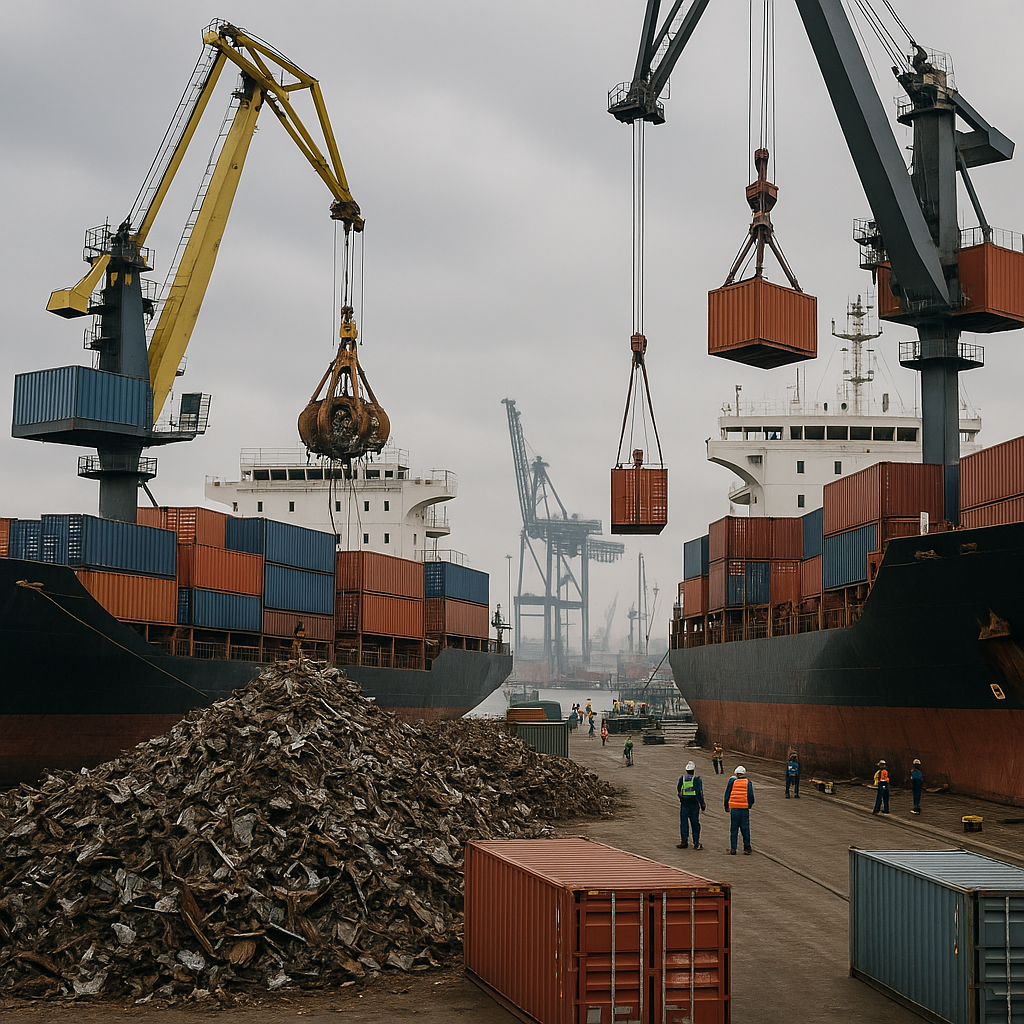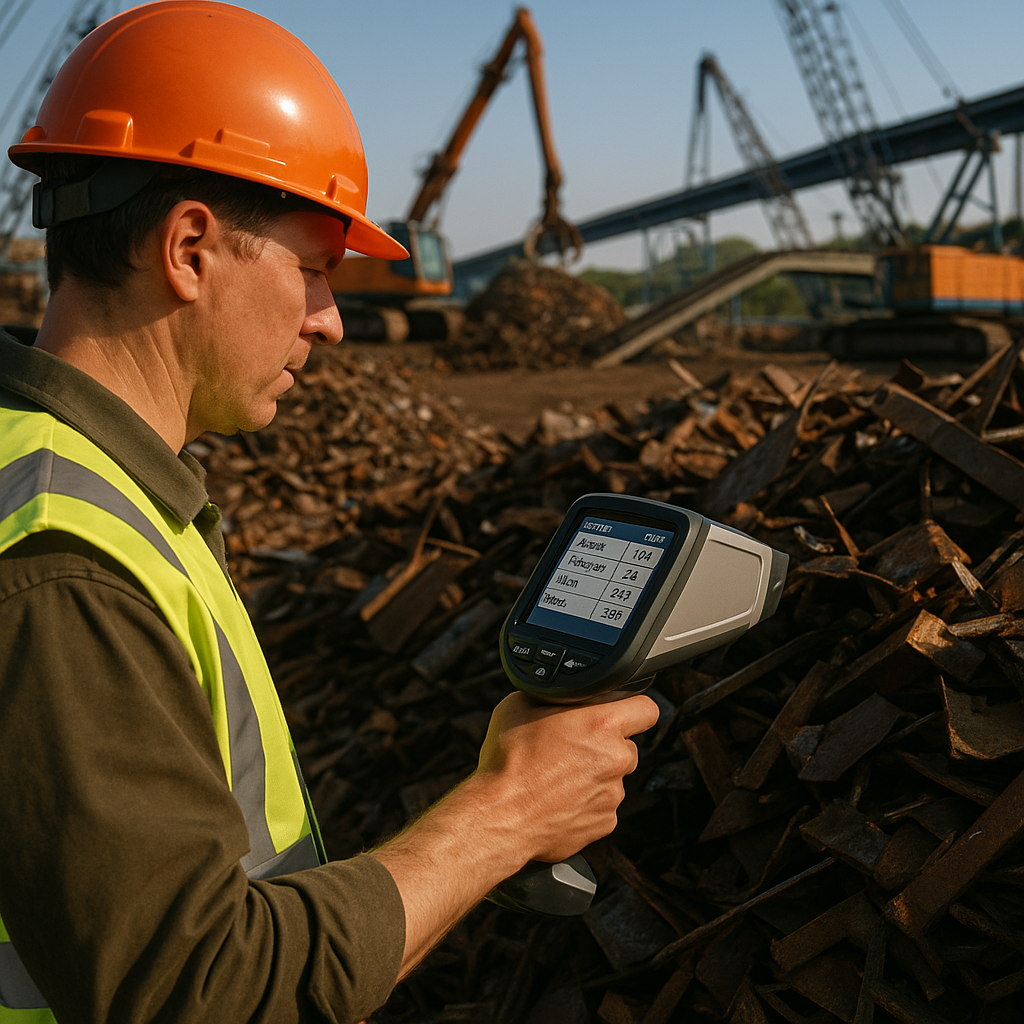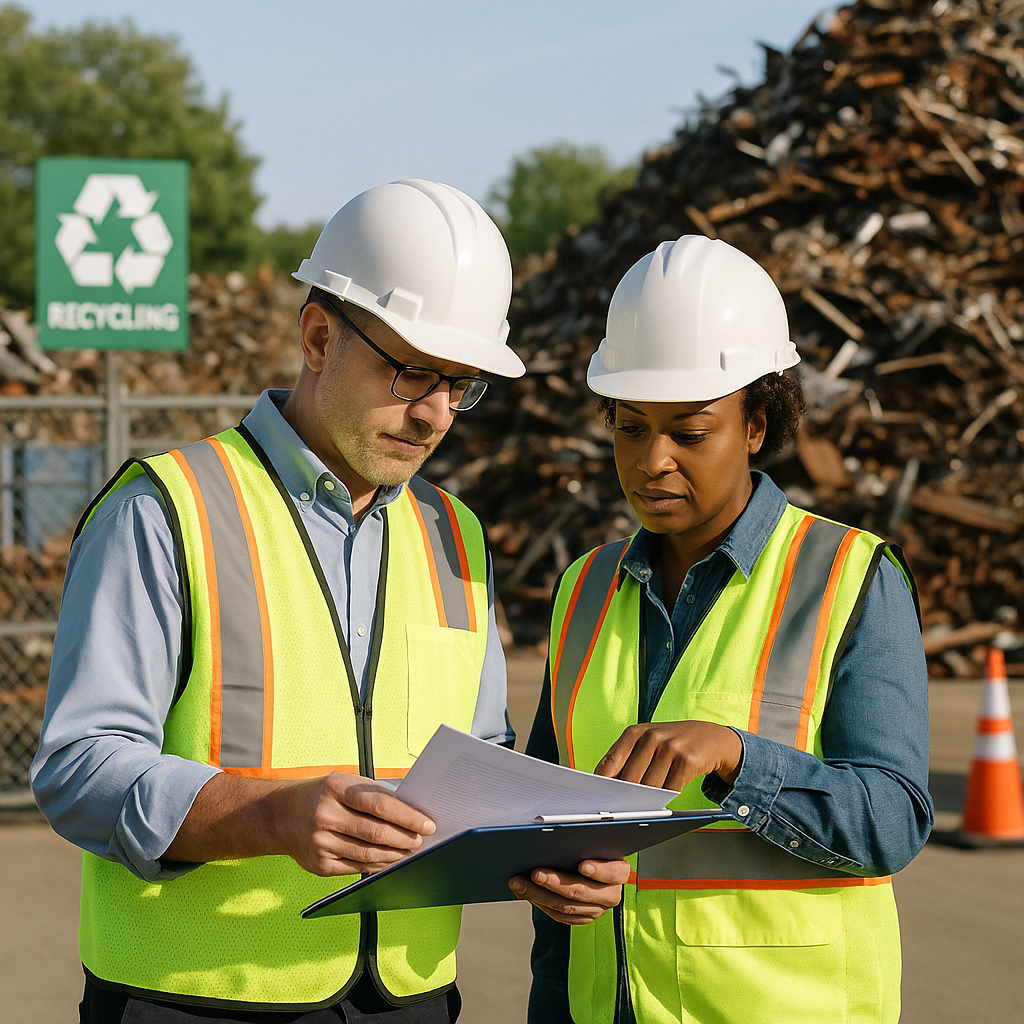5901 Botham Jean Blvd, Dallas, TX 75215
Scrap Metal Prices Explained: Key Factors Driving Market Fluctuations
August 20, 2025In the current recycling market, scrap metal prices can fluctuate by as much as 30% in a single month. This volatility presents both challenges and opportunities for those involved in metal recycling. Understanding the factors that drive these price changes is essential for making informed decisions in this dynamic industry.
Scrap metal prices are influenced by several interconnected factors that form a complex market ecosystem. At their core, these price movements are driven by fundamental economic principles affecting the entire recycling supply chain.
How Do Global Economic Conditions Impact the Scrap Metal Market?

The scrap metal industry serves as an indicator of broader economic health. When economies are robust, scrap metal prices tend to rise, whereas economic downturns often lead to price drops. This interconnected relationship creates a complex web of economic factors that recyclers and buyers must navigate.
GDP Growth and Industrial Production
Economic growth directly influences scrap metal demand and pricing. When major economies experience strong GDP growth, their manufacturing and construction sectors expand, increasing demand for raw materials, including recycled metals.
China’s industrial activity has become particularly influential in global scrap markets. As the world’s largest steel producer, fluctuations in Chinese manufacturing output can affect prices worldwide. When Chinese factories operate at high capacity, demand for imported scrap rises, driving up global prices.
Conversely, economic slowdowns reduce industrial production, decreasing demand for scrap metal. During the 2008 financial crisis, scrap metal prices dropped by over 50% as manufacturing contracted globally.
Currency Exchange Rates
Currency valuations significantly impact the scrap metal trade. Since scrap metal is priced in US dollars on international markets, exchange rate fluctuations affect both exporters and importers.
When a country’s currency strengthens against the dollar, its scrap exports become more expensive for foreign buyers, leading to reduced demand and lower domestic scrap prices. For example, if the Turkish lira strengthens against the dollar, Turkish steel mills may reduce purchases of American scrap, creating a supply surplus in the US.
Alternatively, countries with weakening currencies may see increased scrap exports, as their materials become more affordable to international buyers. This can create domestic scrap shortages and price increases for local consumers.
International Trade Policies
Government policies on trade significantly shape the scrap metal landscape. Tariffs, export restrictions, and import bans can dramatically alter supply chains and pricing structures.
China’s 2018 waste import restrictions serve as a prime example. When China implemented its National Sword policy, restricting scrap material imports, global markets scrambled to find new buyers. US scrap dealers who had relied on Chinese demand suddenly faced oversupply, causing domestic prices to fall.
Similarly, when the US imposed a 25% tariff on steel imports in 2018, it created ripple effects throughout the scrap market. Domestic steel production increased, raising demand for local scrap metal. This policy shift caused US scrap prices to rise temporarily while disrupting established international trade flows.
Regional Economic Disparities
Economic conditions vary widely across regions, creating price differentials in the scrap metal market. Developing economies with rapid infrastructure growth often generate strong demand for recycled metals. Meanwhile, advanced economies with mature recycling systems may produce scrap surpluses.
These regional differences create opportunities for arbitrage, where traders purchase scrap in low-price markets and sell in high-demand regions. However, transportation costs, trade barriers, and currency risks can complicate these transactions.
Case Study: COVID-19 Pandemic Impact
The COVID-19 pandemic offers a stark illustration of how global economic shocks affect scrap metal markets. When lockdowns began in early 2020, manufacturing activity plummeted worldwide. Automotive plants shut down, construction projects paused, and consumer spending decreased.
As a result, scrap metal prices collapsed. In April 2020, US scrap steel prices fell to approximately $190 per ton, down from $300 just months earlier. Collection activities also decreased as recycling operations faced labor shortages and safety concerns.
However, as economies reopened and governments implemented stimulus measures, demand rebounded dramatically. By early 2021, scrap steel prices had surged to over $400 per ton, driven by pent-up demand and supply chain disruptions. This volatility highlights how quickly economic conditions can transform the scrap metal landscape.
Understanding these economic forces helps industry participants develop more effective strategies. By monitoring GDP forecasts, currency trends, and policy developments, recyclers and consumers can better anticipate market shifts and adjust their operations accordingly.
What Role Does Technology Play in Scrap Metal Pricing?

Technology is fundamentally changing how scrap metal is processed, sorted, and valued in the recycling market. Advanced automation systems using artificial intelligence and machine learning algorithms are enhancing the industry’s efficiency while directly influencing pricing structures.
Automated sorting systems represent a major technological breakthrough. These systems use sensors, infrared scanning, and x-ray technology to identify and separate different metals with exceptional accuracy. As a result, recycling facilities can process larger volumes of material more quickly while maintaining higher purity levels.
This technological evolution impacts pricing in several ways. First, by reducing labor costs through automation, processing expenses decrease, potentially allowing recyclers to offer more competitive prices. Facilities equipped with AI-driven sorting robots can process tons of mixed scrap metal in hours rather than days, greatly improving operational efficiency.
Metal analysis techniques have also significantly advanced. Handheld XRF (X-ray fluorescence) analyzers now enable instant identification of metal composition and purity. These devices detect specific alloys and contaminants with remarkable precision, ensuring more accurate grading and pricing of scrap materials. When recyclers can accurately verify the quality of incoming metals, they can offer pricing that reflects true material value.
Laser-induced breakdown spectroscopy (LIBS) is another advanced technology transforming scrap metal analysis. It uses focused laser energy to identify metal types and grades within seconds, eliminating guesswork and improving pricing transparency. For scrap suppliers, this means fairer compensation based on actual material quality rather than visual estimation.
The growth of e-waste recycling has introduced another technological dimension to scrap metal pricing. Electronic devices contain valuable metals like gold, silver, platinum, and copper in small but significant quantities. Advanced separation technologies can now efficiently recover these precious metals from circuit boards and other components.
These e-waste recycling innovations have created new value streams within the scrap industry. The ability to extract and process metals from discarded electronics has expanded the supply of certain materials, influencing market prices. As technology improves recovery rates, the economics of e-waste recycling become increasingly favorable.
Data analytics and market intelligence software also play crucial roles in modern scrap metal pricing. Real-time tracking of commodity prices, supply chain conditions, and global demand patterns allows recyclers to optimize pricing strategies. Cloud-based recycling management systems provide immediate access to pricing information, improving transparency throughout the industry.
Blockchain technology is emerging as another influence on scrap metal pricing. By creating immutable records of material provenance and transactions, blockchain enhances trust and reduces fraud risks. This technology enables documented proof of material quality, sustainability compliance, and chain of custody—factors that can command premium pricing in today’s environmentally conscious market.
The overall impact of these technological advancements is a more efficient, transparent, and precise scrap metal market. For recyclers, sellers, and buyers alike, technology is eliminating many of the uncertainties that previously complicated pricing negotiations. As these systems continue to evolve, even greater accuracy in scrap metal valuation and pricing can be expected.
How Do Environmental Regulations Affect Scrap Metal Prices?

Environmental regulations have become a major influence in the scrap metal industry, both supporting and challenging market prices. Government policies geared toward sustainability directly affect how scrap metal is valued economically.
Regulatory Support for Higher Prices
Recycling-friendly policies can greatly increase demand for scrap materials. When governments mandate that manufacturers use recycled content, the market for scrap metal grows, driving prices up as companies compete for materials.
For example, stringent regulations on mining new ore deposits make recycled metals more economically attractive. As virgin material extraction becomes more regulated, scrap metal offers a cost-effective alternative, strengthening its market position.
Sustainability-focused incentives also create price premiums for recycled materials. As companies face pressure to demonstrate environmental responsibility, many are willing to pay higher rates for materials that help meet sustainability goals and compliance requirements.
Cost Pressures That Lower Prices
Conversely, environmental regulations can impose significant compliance costs on recycling operations. Scrap processors must invest in pollution control equipment, monitoring systems, and administrative processes to meet environmental standards, leading to lower prices offered to suppliers.
Strict requirements for processing potentially hazardous materials can be particularly burdensome. Recyclers handling items like batteries or electronics with toxic components face higher operational expenses to ensure proper handling and disposal of hazardous byproducts.
Water quality regulations present another challenge. The Clean Water Act requires scrap yards to implement stormwater management plans and secure permits for water discharges. These systems are costly to install and maintain, creating downward pressure on the prices recyclers can offer.
Market Adaptations and Price Trends
The industry continues to adapt to regulatory changes. Many recyclers have invested in advanced sorting technologies that improve material purity, allowing them to command higher prices for premium-grade scrap while meeting stringent environmental standards.
International policies significantly impact the global market. China’s National Sword policy, which restricted the import of certain recyclable materials, caused major disruptions in scrap metal flows worldwide, leading to price volatility as exporters sought new markets.
Going forward, carbon pricing mechanisms may further shift the economics of metal recycling. Since recycled metals generally have a much lower carbon footprint than virgin materials, carbon taxes or cap-and-trade systems could create additional price advantages for scrap.
The Sustainability Premium
As environmental consciousness grows, many businesses and consumers are willing to pay more for products with recycled content. This sustainability premium is becoming a significant factor in scrap metal pricing, especially for non-ferrous metals like aluminum and copper.
The automotive and construction industries, in particular, increasingly specify recycled content in their materials to meet green building standards and corporate sustainability goals. This targeted demand creates niche markets where properly certified recycled metals can command higher prices.
Even during economic downturns, the regulatory framework supporting recycling helps maintain a baseline of demand. While prices may fluctuate with broader economic conditions, environmental policies provide a degree of stability to the scrap metal market that wasn’t present decades ago.
Conclusion: Understanding Scrap Metal Pricing Dynamics
Understanding scrap metal prices involves navigating a complex ecosystem influenced by global economic trends, technological advancements, and environmental policies. The market’s inherent volatility presents challenges and opportunities for participants who remain informed and adaptable. Price fluctuations in metals such as steel, aluminum, and copper are affected by factors like international trade policies, manufacturing demand, and regional recycling infrastructure.
Success in the scrap metal industry depends on strategic planning and risk management. Business owners should diversify their customer base and supply chains, implement efficient inventory management systems, and establish strong partnerships with domestic mills and processors. Embracing technologies that enhance sorting accuracy and material recovery can significantly improve profit margins while supporting sustainability goals. Those who manage volatility prudently and consistently monitor market indicators can find substantial long-term value in the scrap metal market.
As environmental regulations continue to tighten and circular economy principles gain momentum, the importance of scrap metal recycling will increase. For your recycling needs and expert guidance on navigating scrap metal markets, contact Okon Recycling at 214-717-4083.
